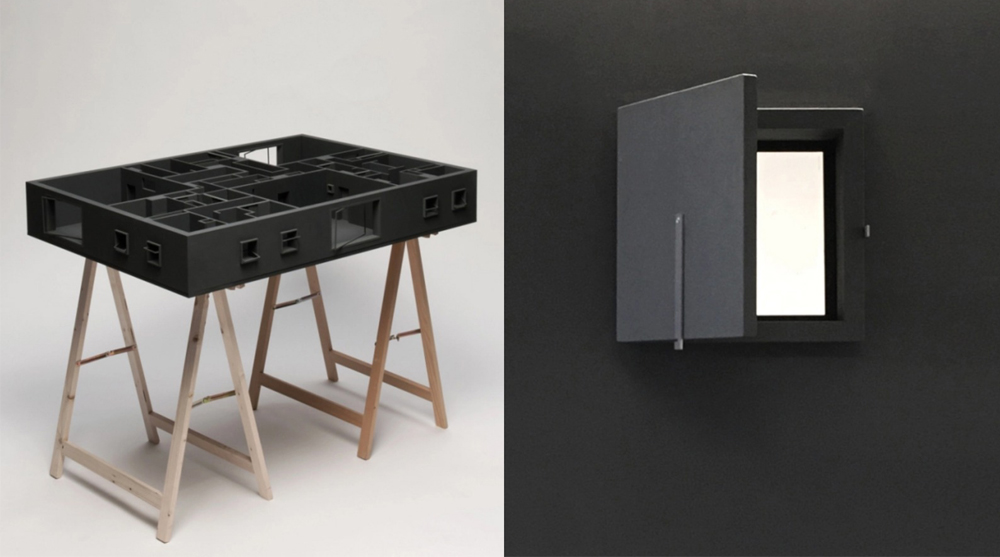The importance of model making in architecture could be thought to have reduced in recent years. With the introduction of new and innovative architecture design technology, is there still a place for model making in architecture? Stanton Williams, director at Stirling Prize-winning practice, Gavin Henderson, believes that it’s more important than ever.
“Architectural technology is one facet of a world that is increasingly virtual and mediated by technology. Whist these technologies have become essential to the way we live – and design - in this context the physical and real become more, not less, valuable.”

The history of model making in architecture
Architectural models have been found in civilizations dating back as far as 4600 B.C.E., however they were not likely to have been used to explore construction and design techniques, but rather as representations for gifts and offerings.
This architectural model was uncovered close to a large house and a sacrificial area in 1966 in Bulgaria, thought to be from 4600 BCE Image source
When Filippo Brunelleschi designed the Florence Cathedral Dome, he used a model as a way of more clearly communicating his design to the craftsmen involved in the construction.
Florence Cathedral Dome by Filippo Brunelleschi 15th century. Image source
It was a method of allowing verification and control, ensuring that the structure that was being built had been tested beforehand. It was much later that the objectification of these models gave them a new form of beauty.
More recently, model making was vital in securing the construction of one of the world’s most famous landmarks. Newcomer Jørn Utzon won an architecture competition for his design for the Sydney Opera House, however, it was considered structurally unsound and was not approved for construction.
The iconic sails of the Sydney Opera House would not have existed without this simple yet effective architectural model by Jørn Utzon. Image source
It was only after Utzon presented a simple wooden architectural model to demonstrate the solution to engineering the now-famous “shells” that would form the roof from the surface of a sphere that it was approved.
This low-tech solution to a complex structural problem shows the power and importance of even simple model making to support architectural design proposals.
3 types of model making in architecture
Model making in architecture is as an integral as sketches when creating a project, and the type of models made vary depending on the stage of the design process.
Conceptual model
Conceptual model making often accompanies the initial sketches and creative brainstorming in the beginning stages of the project. This type of model allows the designer to develop their initial ideas and explore them in a 3-dimensional way. Conceptual models are typically constructed from simple materials and are easily adjusted as the design is progressed.
Working model
The next step in the design process tends to involve a working model, often constructed of higher quality materials that reflect specification in design. Working models help designers communicate scale, form and materials to their clients and colleagues.
Presentation model
Far more detailed than previous models, the presentation model will reflect the proposed material of the project and will often provide context of the site and surroundings. Additional features like illumination and colour schemes can be included.
The future of model making in architecture
Though the future of model making in architecture is fairly certain, the shape it takes is likely to change and evolve fast in coming years. As ever, new technology is likely to have a huge impact on the way models are made and how they are used during the design process.
3D printing
3D-printed architectural models are far faster, cheaper, and easier to build. Image source
This new technology is becoming increasingly popular within the field of architecture, making the production of 3D models significantly easier, faster, and cheaper. 3D-printed models could be created, checked, and discarded without incurring significant costs to the architect. These temporary models would enable the design process to remain a valuable medium of assessment without getting bogged down in unnecessarily detailed visuals.
Digital models

Digital models help to communicate with international clients. Skyhive Skyscraper Challenge 2018 winner - Aero Hive, by Suraksha Acharya, Image source
Digital models will inevitably become integral to the architecture world, with digital offerings set to become increasingly vital when dealing with an international audience or client. The crafting of models signifies the level of care shown by architects, and the level of detail they have considered. However, placing your beautifully-crafted model into an envelope and sending it around the world will never be a good option. So digital models will fill an international need.
Hybrid media and technology
Models will likely remain a popular medium for presenting architecture for years to come, however they could be paired with new technology and media such as virtual and augmented reality. Combining a physical representation and a digital extrapolation is a sure-fire way for clients to experience the best of both worlds and for architects to present their designs in new and exciting ways.
New York Affordabel Housing Challenge architecture competition winners Lap Chi Kwong, Alison Von Glinow. Project presentation in VR.
Do you still use architectural models?
Do you think model making in architecture is outdated or is it still a part of your creative process? Share your experience with architectural models, either when presenting to clients or brainstorming designs for pitches or architecture competitions.
Top 3 Reasons Why You Should Enter Architecture Competitions
Curious about the value of architecture competitions? Discover the transformative power they can have on your career - from igniting creativity and turning designs into reality, to gaining international recognition.
Learn more



























